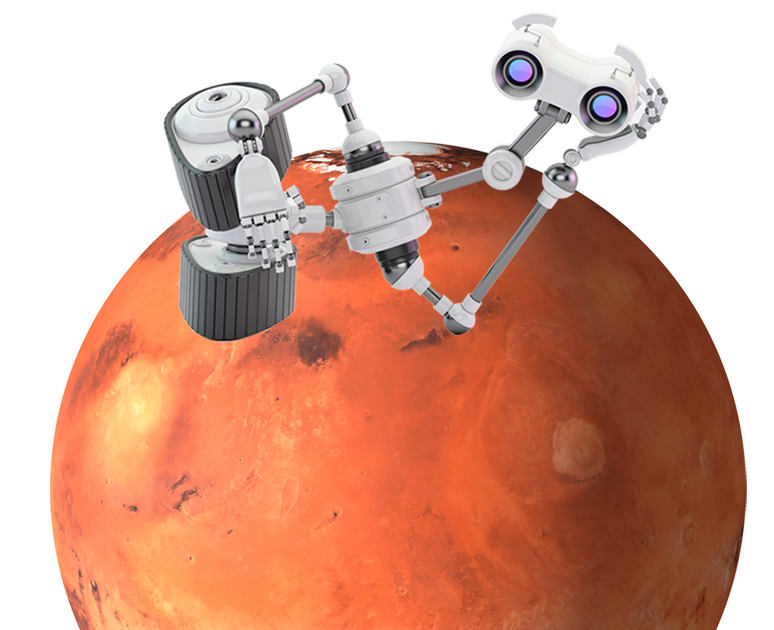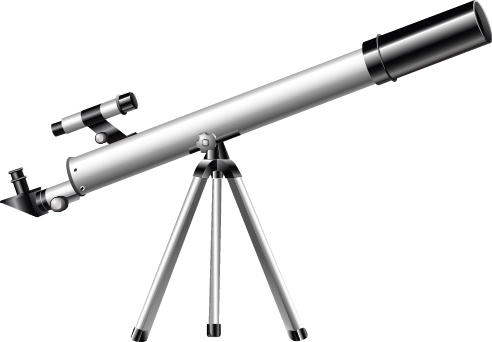EXPLORE SPACE
Are you ready to explore the space! At GUHEM Space Gallery, we start our space journey by learning about the steps humankind took throughout history and by seeing how the astronauts live at the international space station with entertaining and interactive content.
Space observation, planets, the functioning of the universe, the latest space technologies, mini planetarium, possibilities of life on different planets, walk on the Moon, space climbing, laboratories, Mars rover assemblies and much more are waiting for you in the "Explore Space" section.
Are you ready for the mission to Mars?
GUHEM is the place to be to fulfill the mission with the rover on Mars and have a unique experience!

All aboard for space!
Do you know that we use rockets to move between floors in GUHEM?
Anatomy of a Rocket


Cargo Section
The payloads of a rocket to be launched into space can be cargo, a satellite to be placed in orbit, a space probe to be sent for exploration, or a crewed mission.
Liquid Fuel Tank
It is the heaviest part of the rocket. It is divided into upper stage and core stage. It is a liquid fuel tank.
Solid Fuel Propellants
The parts used to provide the additional thrust needed for the rocket to be freed of the gravitational force of the Earth. They are separated from rocket when their mission is complete.
Rocket Engine
The mechanisms that control the combustion of flammable and combustible materials and transfer the heat and gas to the external environment.
-
Atmospheric entry with a space capsuleExperience atmospheric entry with the US-made Mercury 7 and the Russian-made Vostok 1 space capsules.
-
Walk on the MoonExperience walking on the moon with the EMU backpack and get beyond the limits in GUHEM.
-
Life on Space StationHow to carry out daily activities on a space station? Experience life on a space station in GUHEM with the Comprehensive Interactive Space Station model.
-
Mini PlanetariumWatch how the universe works at a mini planetarium.

Galileo's telescope.
It is easy to see the world from Galileo's perspective in GUHEM.
Discover The Planets
Jupiter
Jupiter is the first of the four gas giants of the Solar System. Like the other four, Jupiter has a thick and cold atmosphere, rings and lots of moons. The largest moons of the Jupiter -also known as Galilean moons- are Europa, Ganymede, Io and Callisto.
Mars
Mars is the fourth planet from the Sun. It is also referred to as the Red Planet because the iron oxide on Mars’s surface gives the planet a reddish appearance.
Uranus
Uranus is a pale blue planet with visible cloud layers on its surface. Under its thick atmosphere, Uranus consists of frozen gases and a rocky core at the center. Also it is the first planet discovered with a telescope.
Neptune
Neptune is the farthest planet from the sun, that’s why Neptune year is the longest one in the Solar System. The atmosphere is thick and very cold. Also it is the first planet discovered with the help of mathematical calculations.
Mercury
Mercury is the smallest planet in the Solar System and also it is the closest one to the Sun. Its thin atmosphere cannot hold the heat so Mercury nights are very cold and dark.
Venus
Venus is the closest planet to Earth. Due to greenhouse effect, its surface is very hot. The orange sky of Venus frequently witnesses acid rains and lightnings. A Venus day is longer than a Venus year.
Saturn
Famous for its majestic ring, Saturn is the least dense planet in the Solar System and has a density even less than that of water. In other words, this planet would be able to float on the ocean if you could find one large enough. Also Saturn's seven rings are the most massive and widest in the Solar System.
Earth
Earth is our home in space. It is the only planet having liquid water on the surface and -of course- life. Earth is the densest planet in the Solar System. This means, Earth is the planet with the largest mass relative to its volume.
Sun
As a medium-sized star, the Sun makes up 99.8% of the total Solar System mass. The energy radiated from sun is the most important source of life on Earth by photosynthesis and has significant effects on the Earth's climate.
